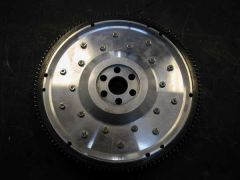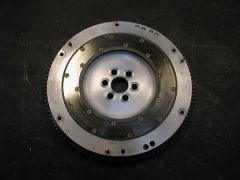-
Posts
9842 -
Joined
-
Last visited
-
Days Won
56
Content Type
Profiles
Forums
Blogs
Events
Gallery
Downloads
Store
Everything posted by johnc
-

72 240z wanders left & right randomly
johnc replied to Miles's topic in Brakes, Wheels, Suspension and Chassis
Check front alignment. Make sure toe is around 1/16" in. -
Port matching is one of those low buck mods that helps other mods perform better. Its not worth removing the intake/exhaust/head from the car just to do port matching but when that stuff's off for other reasons, its another thing to add to the to-do list.
-
The FSM specifies a pushrod height of 3.5 to 4mm (.1377 to .1575") measured from the flange surface (the aluminum plate bolted to the master vac hosing) to the tip of the pushrod. I would adjust the pushrod so there is about ..010" clearance between the tip of the pushrod and the cup at the back of the MC.
-

flip rims for negative offset???
johnc replied to piston's topic in Brakes, Wheels, Suspension and Chassis
Just to clarify, its not actually "flipping" the wheel. Its disassembling the wheel into its three parts and then flipping the rim halves (inside to outside and outside to inside). -
Yup, little things like the above and flowers every month or two for no reason goes a long way to keeping the little women happy.
-
From the album: Parts
-
From the album: Parts
-
Spend a week searching this site and you should be able to find all the answers to your questions.
-
Think of it as a "Jack of all Trades, Master of None" welder. With the proper attachements (TIG kit, Wire feed, etc.) it can do any kind of welding you want but it won't be the best machine for each process. But, that's OK because a good welder can weld using just about anything that generates and arc or a flame. Before I opened my shop I seriously considered buying a big step van and building a mobile fab shop. The idea was to provide welding services to most of these bolt-on "Tuner" shops. That Ranger welder was what I was planning on installing on the truck.
-
1977 and I'm at a stoplight in my 1966 GTO that has a 1972 Pontiac SD 455 engine, Muncie M22 4 speed, 4:11 rear gears in a 12 bolt posi. Rear suspension is stock with old shocks (some may know where I'm going with this). A brand new silver anniversary Corvette pulls up next to me, driver puts his car in neutral, and revs the engine. Looks like one of the local dealership salesman driving, after his usual liquid lunch. I give him a thumbs up, the light turns green, I sidestep the clutch at 2,500 rpm, and all hell breaks loose! The whole car is shaking, the sun visors are flopping down, the glove box door slams open onto my passenger's shins, and the transmission pops out of first. I let off the gas and look around to see the Corvette moving away into the distance. I put the clutch in, put the car back into first, and drive carefully into a parking lot. We look under and around the car and find nothing wrong. The car drives normally and I try a few more semi-hard launches with no strangeness. I tell a friend who drag races a 1967 Chevelle and after he stops laughing he explains the traction hop problem common to the GM 4 link coil over rear suspension. New shocks, Lakewood ladders bars, and relocating the upper link pivots and the problem never re-appeared. Neither did the Corvette for a re-match.
-
No kidding - Track alignment, Hoosier R3S03s, and gearing that gives 52mph in first means a lot of this at an autocross:
-
Yup, but that was an R180 with a Quaife which is about the biggest heat generating combination you can run. And that 300+ degrees was measured with a IR gun on the rear cover after a 30 minute session at Buttonwillow. I started shopping for a cooler after that weekend.
-

Removing front core support
johnc replied to LamboZ's topic in Brakes, Wheels, Suspension and Chassis
Think of the engine compartment as a rectangular box with the firewall and core support as the small ends of the box. The loads coming into this box are on the long sides. Removing one end of the box turns the engine compartment into a tray. The loads are still coming into the long sides of this tray. What's going to keep this tray from bending? Think about it that way, make yourself a carboard tray, and experiment. -
They get hot - over 250 degrees is not unusual. At the very end of my time with my racing 240Z I put a diff cooler on it after spending years changing the fluid after every event. Run a synthetic and change it often if you've not installed a cooler.
-
Most welding mistakes are the result of: 1. Poor preparation and fitment. 2. Not enough heat - poor penetration. Make sure the tube joints are very tight, no gaps greater then the thickness of the filler wire. Mechanically and chemically clean the welded areas. Cut, fit, clean and test weld a few scraps. When in doubt, turn up the heat.
-
Motor looks good. I would use that $600 on the suspension, but I'm a suspension guy...
-
Sorry guys, nothing yet. I've been so busy here at the shop I've only put 1,500 miles on the 350Z. I'm taking it out this weekend to an autocross practice and championship at Cal Speedway in Fontana. Gonna run it bone stock and see what it needs. My guesses: 1. LSD. 2. Wider wheels and tires (18 x 10s with 285/30-18s will fit all around). 3. More spring (probably go with the T2 approved stuff at 650F and 690R). 4. Double adjustable shocks (probalby the Koni 2812).
-
Oil level in the engine and transmission will change. Possible clearance issues with the steering rack/oil pump. Possible clearnace issues with exhaust manifold and brake MCs. Possible clearnace issues with the alternator and the steering rack/frame. Clutch slave cylinder lines might have to be extended. Electrical to the starter might be too short. Basic driveline alignment will change and have to be corrected.
-

Front Suspension shock tube modification
johnc replied to Careless's topic in Brakes, Wheels, Suspension and Chassis
For the shocks that I've had experience with in a 240Z racing application (Tokico BZs, Koni 8610/8611s, Penske 8760s) the total shock travel is 6 to 6.75". The T3 solution is not ideal and seems like an extra expense when you can run, as you said above, a stock sized shock inside an unshortened strut and acheive the same thing. -
In my limited experience, having driven ITS prepared L24s and L28s, my guess is the cam and valve springs are the limiting factor for both engines. From what I understand they are close to identical but going much past 6,700 in an L28 is an exercise in noise and flatness. A L24 can go to 7,000 before I get the same feeling.
-
Cut it: 1. C-pillar seam 2. Rear striker plate. 3. Rear valance. 4. Inner wheel well support. 5. Inner wheel well. And then drill out all the spot welds at the rocker, door latch area, hatch edge, and any inner sheetmetal that you don't want.
-

Front Suspension shock tube modification
johnc replied to Careless's topic in Brakes, Wheels, Suspension and Chassis
You're right, its not. But lowering a car to the point that you have 1" of bump travel before its on the bump stops is bad for handling. Very bad at high speeds. This is true regardless if its a stock lowered car or a car with the fancy spacers. Ok, we need to be clear on the terminology. Shock is the thing with the travel and Strut is the tube the shock is mounted in. Valving is not relevant for this discussion. A shock has X amount of travel and in most street and racing setups where you are not limited by class rules you set up your shocks and the static ride height so the the shock is in the middle of its range of travel. There are exceptions to this but they are irrelevant for our discussion. By placing a short shock inside a long strut and spacing that short shock down to the bottom of the housing you are losing bump travel by the exact amount of that spacer and you are NOT gaining any rebound travel (if the shock is setup in the middle of its range of travel with the static vehicle load on it). Bump travel is very important for racing. When a car hits the bump stops the spring rate increases at a very quick rate almost to an infinate number (body flex comes into play at this point). By shortening the strut and spacing the short shock to the top of the shortened strut tube you retain as much bump travel as is practical. A 240Z with 5" of ride height (measured at the rockers) can have 3" of bump and 3" of rebound travel with shortened struts. Without shortening the struts or by using the fancy spacers we are discussing on the same car, you will end up with about 1" of bump travel and you'll use that up in roll on a fast corner. I don't know how to explain it any better. -
And that would be very wrong. The OEM rear hatch glass weighs 15 lbs and the OEM front windshield with the rubber gasket in place weighs 30 lbs.


